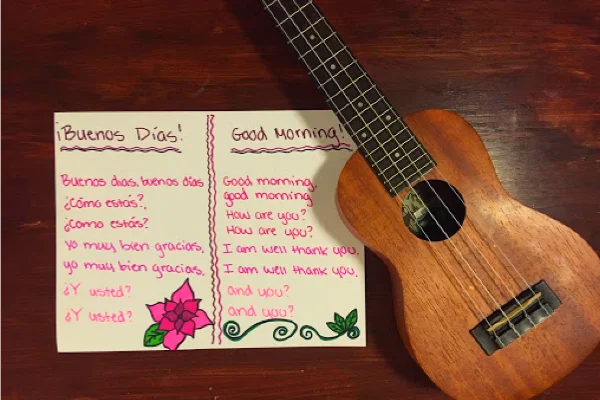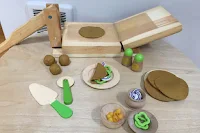How can we make sure that we are including or adding culture and diversity into our everyday learning environments?
It is so important that we give children the tools, exposure and understanding of differences and similarities, between themselves and others, from an early age. We want to create an environment where certain differences are viewed by children as usual, every day life. Where all children can readily access resources that are made with diversity in mind, so that children grow to learn that we are all different, and we are all the same.
Today, I have Lauren, an Early Childhood Educator with a wealth of training and experience within culture and diversity, explaining a little about how we can add culture and diversity into our learning environments both at home and in a setting...
Lauren:
As an Early Childhood Educator with years of training on the subject, I am here to offer some tips.
Let's break this down into three different sections;
It is so important that we give children the tools, exposure and understanding of differences and similarities, between themselves and others, from an early age. We want to create an environment where certain differences are viewed by children as usual, every day life. Where all children can readily access resources that are made with diversity in mind, so that children grow to learn that we are all different, and we are all the same.
How to add culture and diversity to your home and learning environment
(affiliate link)
Lauren:
With everything that's going on in the world it is vital to incorporate culture and diversity into your home and learning environment and provide resources and materials for children to explore and learn from. But how do you do that? Do you simply buy a few books? Watch a couple videos? Where do you start when wanting to add culture and diversity to your home and learning environment?
Affiliate links: Click images to explore the books
As an Early Childhood Educator with years of training on the subject, I am here to offer some tips.
Let's break this down into three different sections;
1). The books, music and languages used in daily learning and play.
2). The play environment and how to incorporate authentic materials to help aid in play and diverse learning.
3). Your daily ideology and how to approach situations and events in life.

Number One: Language
Incorporating different cultures and languages into your daily routine is easy and fun. Start by integrating new books into your library section. Look for books that are diverse, bi-lingual, and discuss history. Having these books available for children gives them opportunities to explore and read about different cultures and scenarios. Take time to reflect, generate questions and make observations.
During story time make sure to ask questions that encourage children to think about the characters in the stories.
- What do you think the main character is feeling right now?
- What things in the story can you relate to or don’t relate to?
Asking these types of questions will push children to consciously think about their response and will help to deepen the conversation.
Another easy way to incorporate multiple languages into your daily learning is by listening to songs and podcasts and signing those songs during music time. Children can memorize whole movie scores so they’ll be able to pick up new languages and information in a breeze!
Number Two: The Play Environment:
The environment should reflect the diversity of the children and families you serve or that are a part of your larger community. This includes having diverse play items such as dress up clothes, dolls, a wide range of books, and other toys that represent culturally affirming and accurate depictions.
Add dolls to the dollhouse that represent a wide range of cultures and ethnicities so that children can act out their play ideas and work through real life situations, and collect various types of clothing. This includes serapes, saris, khimars, suits, dresses, and shoes. Mix them into the dress up bin and that will allow children to express themselves in new ways as well as experience fashion from around the world.
Finally, deck out the “Play Kitchen/Home area” with menus from different restaurants and in multiple languages, bring in various tools and ingredients for children to explore and experiment. Have taste test opportunities so that children will be able to experience new foods and flavors.
Number Three: Daily Ideology:
Our everyday actions, words and choices will influence how children see privilege, race and racism. Therefore the change and growth starts within our everyday actions.
A great way to learn about something new is to write down your questions and do research on the topic to find the answers. Turn to the internet, to books, to individuals and learn about new cultures and ways of living. Research and look at classrooms, homes and parks from around the world, discover how those children get to school, what games they play together, what their family structure looks like, and the popular foods. Children love learning about kids their own age, therefore this is a great way to familiarize yourself and learn about other cultures as well as other children.
Talk with children about race and racism, talk to them about inequality and allow space for an open and safe time to discuss and ask questions. Children learn through observation, trial and error and daily practice, just like adults.
There is no one ‘best way’ on how to incorporate culture and diversity in childcare or the home setting, but instead, it requires a multifaceted approach that continues throughout a child’s education and life.
Lauren is an early childhood educator who focuses on child led play and allows children opportunities to explore their world and environment in a safe and fun way. She started her learning page ‘Learning with Lauren PNW” on Instagram to provide resources and meaningful play ideas to individuals and families to try with their littles.
Lauren creates meaningful play and learning activities that pertain to the child's developmental level and current interest with natural materials, loose parts and things from around the house. Learning and play don’t have to be expensive, just rich in development and growth.
Lauren creates meaningful play and learning activities that pertain to the child's developmental level and current interest with natural materials, loose parts and things from around the house. Learning and play don’t have to be expensive, just rich in development and growth.














